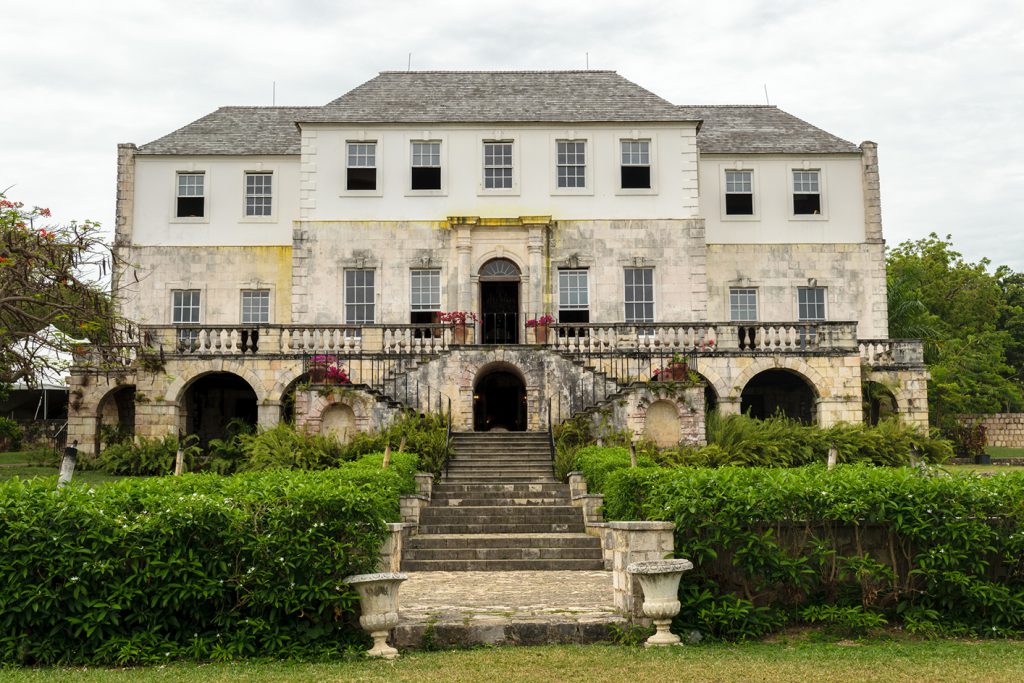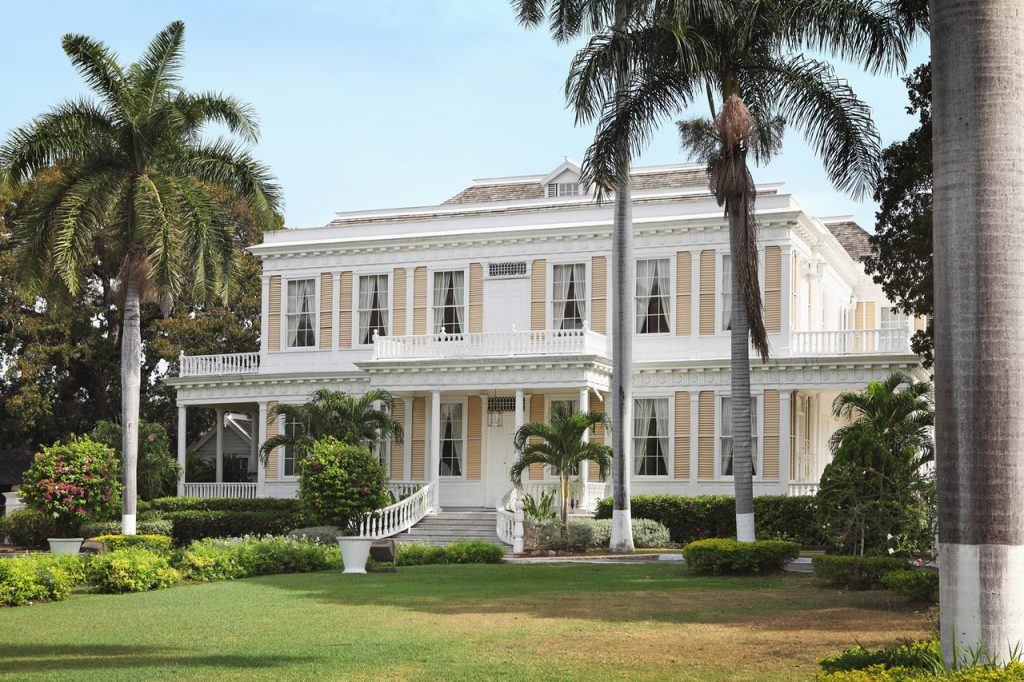A Quick Look at Some of Jamaica’s Main Heritage Sites
by Carolyn Lee Jan 23, 2023

Jamaica boasts a diverse and dynamic heritage. Our heritage results from a fusion of different cultures that have impacted our way of life. The Jamaica Heritage Trust ensures that heritage sites are protected and accessible. If you are interested in exploring some of our heritage sites, we have several of our heritage sites that will allow you to immerse yourself in our history.
Heritage sites in St. James.
Sam Sharpe Square: The square has several heritage structures, which include the Sam Sharpe Monument, the Cage, the Civic Centre, and the Freedom Monument. It was initially called Charles Square but was renamed in 1976 to honour national hero Sam Sharpe.
Rose Hall Great House: Built in the mid-19th century, the Great House has an intriguing history that features the legend of Annie Palmer. It is presently a tourist attraction for locals and international visitors to the island.
While in St James, you can also visit the Old Slave Ring, St. James Parish Church, Goodwill, and Fort Montego Bay.
Heritage sites in Clarendon.
The Chapelton Clock Tower and War Memorial: The Clock Tower is a landmark that memorialises the fallen men and women in Clarendon who died in World War One (1914 -1918).
The Portland Point Lighthouse: Thelighthouse is 145 feet high, the highest tower on the island. Other sites in Clarendon include Halse Hall Great House, St. Peter’s Church, May Pen Clock Tower and Milk River Spa.
Heritage sites in Hanover.
The Kenilworth Ruins: The ruins in Hanover are one of the most impressive 118th-century buildings in Jamaica. The estate, according to records, produced sugar, molasses and rum during the mid-18th to the early 19th century.
Tryall Estate: The Tryall Estate boasts a golf course, tennis and beach club. The property still has 119th-century gravestone fragments and evidence of sugar works, including a still functional cast-iron water wheel, a brick chimney and an old cast-iron boiler. If you are in Hanover, you can also visitLucea Town Hall, Hanover Parish Church, Fort Charlotte, and Blenheim.
Heritage sites in Kingston.
Port Royal: Port Royal was once considered the virtual capital of Jamaica in the 17th century. Once dubbed the “richest and wickedest city in the world”, Port Royal is now a quaint town with a rich history.
Liberty Hall: Each UNIA was required to have a Liberty Hall, which was its headquarters. Liberty Halls also existed in New York, Panama, Costa Rica and Belize. Today, the Liberty Hall at 78 King Street houses the Marcus Garvey museum.
Institute of Jamaica: The Institute was established in 1879 to promote and preserve culture on the island. TheKingston Parish Church, Rockfort, Gordon House, Ward Theatre and Trench Town Culture Yard are other well-known places of interest in the city.
Heritage sites in Manchester.
Northern Caribbean University (NCU): Formerly known as West Indies College, NCU housed the earliest teachers at the institution in 1919.
The Mandeville Courthouse: The courthouse is the oldest building in Mandeville Square. It was built in 1817, two years after the town was incorporated. While in Manchester, check out other heritage sites like Bloomfield Great House, Marshall Pen Great House, Roxborough and Maidstone.
Heritage sites in Portland.
Moore Town: Originally known as New Nanny Town, Moore Town is a Maroon settlement that resulted from the 1739 peace treaty between Cudjoe (Nanny’s brother) and the British.
Blue and John Crow Mountains: The Blue and John Crow Mountains is the first Jamaican site inscribed on the prestigious UNESCO World Heritage list. You’ll also find Folly Point Lighthouse, Charles Town, Fort George, Portland Parish Church, Nanny Town, and Seaman’s Valley in Portland.

Heritage sites in St. Andrew.
St. Andrew Parish Church: This is one of the oldest churches in Jamaica. It was built in 1664.
Devon House: Devon House is an excellent example of 19th-century architecture in Jamaica. The mansion and its beautifully manicured lawns are used recreationally by locals and tourists. While on a trip to St Andrew, you can also visitthe Bob Marley Museum, Mona Great House, and Hope Botanical Gardens.
Heritage sites in St. Ann.
Moneague Inn: In 1860, the Inn was described as the best hotel in Jamaica. It was declared a National Monument by the Jamaica National Heritage Trust on 13 May 1999.
The Seville Great House: The Great House was built in 1745 by Captain Hemmings’ grandson on the site of the original house. The Seville Great House is now a heritage attraction.
St Ann also boasts the St. Ann’s Bay Fort, Ocho Rios Fort, Seville Heritage Park, and the York Castle Great House.
Heritage sites in St. Catherine.
Flat Bridge: The bridge was constructed after 1724 with piles and braces interlaced with masonry. It is one of the island’s oldest bridges.
Pinnacle: The founder of Rastafarianism, Leonard Howell, created the first Rastafari community at Pinnacle around 1940. It was a self-reliant community with approximately 4 500 members. In St Catherine, you’ll also findTwo Sister’s Cave, Spanish Town Courthouse, and Spanish Town.
Heritage sites in St. Elizabeth.
Accompong: The town was founded in 1739 and named after its founder, Accompong, the brother of Quao, Cuffy, Cudjoe and Nanny. On 6 January each year, traditional ceremonies are held to acknowledge the signing of the Peace Treaty.
Lover’s Leap: According to legend, during slavery, two enslaved young lovers met secretly on the adjoining Yardley Chase Plantation. When faced with separation, they leapt off the cliff, which has a drop of approximately 1,600 feet, to their deaths. Today the site is a well-known attraction and houses a restaurant and lookout point.
Other noteworthy places of interest in St Elizabeth arePedro Bank, Black River Great House, Lover’s Leap Lighthouse, Munro College, and Hampton School.
Heritage sites in St. Mary.
Harmony Hall House: The Harmony Hall House is reminiscent of the Jamaican-Georgian architectural style. It was declared a national monument by the Jamaica National Heritage Trust on 3 April 2003.
Rio Nuevo Battle Site: This is where the final battle between British and Spanish forces took place to determine possession of Jamaica. The Spanish formally conceded Jamaica to England by the Treaty of Madrid in 1670.
Other well-known heritage sites in St Mary includeWoodside, Fort Oracabessa, Firefly House, Port Maria Court House and the Rio Nuevo Taino Site.
Heritage sites in St. Thomas.
Morant Bay Courthouse: The Morant Bay Courthouse is a reminder of the Morant Bay Rebellion of 1865. This rebellion resulted in the executions of Paul Bogle and George William Gordon. Both men are national heroes of Jamaica.
Stony Gut: This is the birthplace of Jamaica’s national hero, Paul Bogle. Paul Bogle was hanged after he incited a violent protest, later known as the Morant Bay Rebellion.
You’ll also find Orange Park, Morant Bay Fort, Bath Mineral Spa, and the Morant Point Lighthouse in St Thomas.
Heritage sites in Trelawny.
Trelawny Parish Church: This is one of the largest Anglican churches in Jamaica and the oldest public building in the town. The church was built in 1795, and the churchyard has graves from over 200 years ago.
Stewart Castle: This site has the ruins of an impressive cut-stone mansion – Stewart Castle. It was excavated in 1957 by Charles Cotter. Among the discoveries were a Taino midden and other artefacts that gave insight into the Taino’s dietary habits.
Trelawny also has the Fort Dundas, Falmouth Wharves, Granville, Rio Bueno and the Good Hope Great House.
Heritage sites in Westmoreland.
Negril Point Lighthouse: This Lighthouse stands 66 feet above ground level, and the light is elevated 100 feet above sea level. It was built in 1894 by the French Company Bubbler & Bernard and operated by a gas lamp until 1956. An acetylene gas lamp was used until 1985t when replaced by solar energy.
Mannings High School: In 1711, Thomas Manning bequeathed a gift of land to set up a free school in Westmoreland. After the legal aspect of formalising his will took place in 1736, the Free School was established. The Thomas Manning Building is the most magnificent building on the property.
Other heritage sites in Westmoreland include Seaford Town, Cast Iron Fountain, Salem, Chebuctoo Great House, and the Savanna-la-Mar Fort.
We selected a few heritage sites to highlight; however, each parish boasts several that you can check out. For a more comprehensive list, visit the Jamaica Heritage Trust’s website.
Sources: JIS, Goodreads and Jamaica Heritage Trust.








